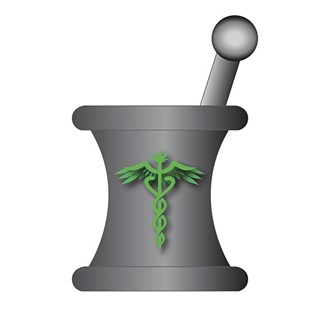There's a video game called Katamari Damacy that lets you roll a tiny adhesive ball around on the screen, picking up anything you roll over. You start by picking up tiny things, like pens or pencils or silverware. Eventually you are picking up bigger and bigger things, like trees, houses, office buildings and stadiums, then planets and comets.
The cannabis katamari started picking up pencils and pens in 1996, when California passed the nation's first medical marijuana law. Now we're starting to pick up some cars and trucks, and it won't be long before we're snapping up buildings and aircraft carriers across the nation as legislatures turn from the dark side to the light. Here's a sampling of some recent developments:
Illinois
On May 17, the Illinois Senate passed a medical marijuana pilot program that the governor has said he supports. He might have signed it by the time you read this. Two years ago, the Illinois House of Representatives rejected a similar bill, but the House has already passed this version. Where there's a bill there's a way.
I urge caution, though. The Illinois law is pretty restrictive. It allows purchases only from one of 60 authorized dispensaries, doesn't allow patients to grow their own and does not include chronic pain as a qualifying illness. Take away chronic pain, and Arizona would have about 11,000 patients, not 37,000. Colorado would have about 13,000, not 213,000.
Ratios like that hint that rural areas of Illinois won't have more than a handful of patients. We have roughly 1 million people in Tucson and just 3,600-ish cannabis patients. Take away 71 percent of those (chronic pain), and Tucson has just 1,000 or so patients. How many dispensaries could that support?
Alabama
The Yellowhammer State has a persistent cannabis backer in Rep. Patricia Todd of Birmingham, who happens to also be the state's first openly gay public figure, according to her profile on the Alabama House website. In December, Todd introduced a cannabis bill covering a broad array of medical conditions, including lupus, post-traumatic stress disorder, migraines and depression. On Feb. 6, the House Health Committee killed the bill 12-2. So on Feb. 21, Todd introduced another bill. It went to the Health Committee, where it has at least not been rejected yet.
Thank you, Patricia Todd. The momentum of culture and sensibility are behind you. Keep fighting the fight.
Iowa
A couple of presumably corn-fed legislators introduced sister versions of a medical cannabis program in the state House and Senate. Both bills await action in committee.
The Iowa program would include a system of nonprofit dispensaries and allow caregivers to grow for patients the way Arizona does. The rules, however, have not been written. This can sound pretty good, then fall flat the way it has here. Very few Arizona patients can have caregiver-growers because most of us live too close to dispensaries. The Iowa program would include chronic pain as a qualifier, but not PTSD, depression or migraines.
Stay tuned.
Minnesota
On May 2, legislators in the House and Senate introduced sister bills to create a medical cannabis system. Both await action in committees.
The Minnesota system would allow chronic pain and PTSD as qualifiers but not migraines or depression. Dispensaries would be allowed based on population—counties with fewer than 20,000 residents would have none; counties with 20,000 to 300,000 people would have two; counties with more than 1 million people would have three.
Other states
Other states with medical cannabis bills introduced since January include Kentucky, Kansas, Missouri, New Hampshire (the House has already passed this one; it's pending in the Senate), New York, Ohio, Pennsylvania and West Virginia. Some of these are second attempts. Damn, that's a lot of states. It's fun to watch the katamari grow as states cling to the cannabis ball. It's growing fast, and it will be nice when it gets big enough to roll over Congress and snatch up the entire federal government.











